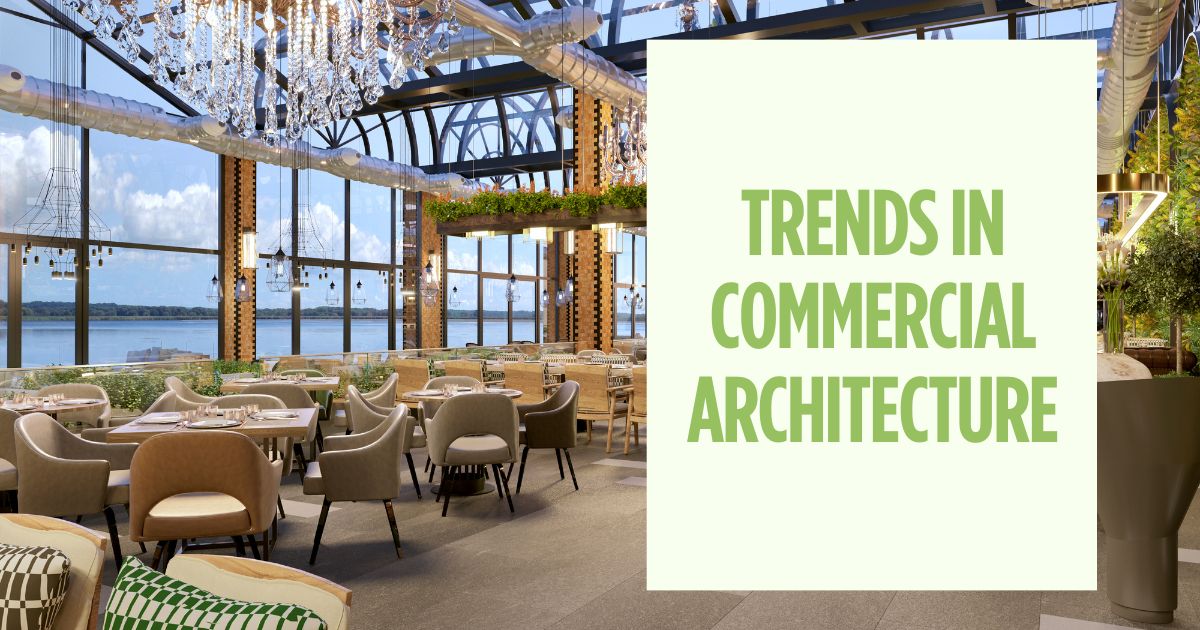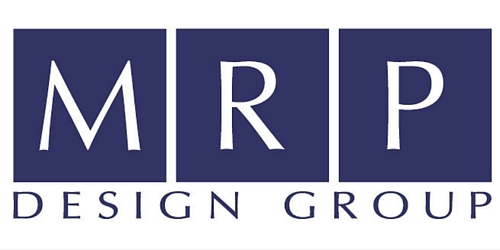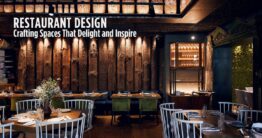
Architecture evolves; the changing needs of people, new technologies, and changes in the availability of materials inform the trends that affect the architecture of commercial buildings. Commercial architecture is seeing several significant trends that will shape the industry’s landscape for years to come.
Sustainable Design
Architects are increasingly focused on creating environmentally-friendly buildings that reduce energy consumption, promote water conservation, and minimize waste. Sustainable design involves using materials that are recycled or can be reused, using energy-efficient systems and appliances, and incorporating green spaces into building designs. Building designs are also expected to integrate energy-efficient systems, such as solar panels and wind turbines, to generate clean energy.
Biophilic Design
Biophilic design is a trend that incorporates nature and natural elements into commercial building designs. The trend is based on the idea that humans have an innate desire to connect with nature and that incorporating natural elements into building designs can improve well-being and productivity. Incorporating biophilic elements can include features such as green walls, living roofs, water features, and natural lighting.
Smart Buildings
Smart buildings are equipped with technology that allows them to collect and analyze data, optimize energy use, and improve the overall efficiency of building operations. These intelligent buildings can include features such as automated lighting systems, HVAC systems, and security systems that can be controlled remotely. These buildings can also use sensors and data analytics to optimize energy consumption and reduce waste.
Modular Construction
Modular construction involves prefabricating building components at an off-site facility and transporting them to a permanent plot for assembly. This offers several advantages, such as faster construction times, reduced waste, and cost savings. Industry experts say such projects can take 30%-50% less time than traditional construction. For all its environmental advantages, the global modular market is thriving, expected to grow from USD 84.48 billion in 2023 to USD 131.58 billion by 2030.
Adaptive Reuse
Adaptive reuse involves repurposing existing buildings for new uses. This trend is expected to gain momentum in 2023, as businesses look for more sustainable ways to create new spaces without the need for new construction. Adaptive reuse can involve converting old warehouses, factories, or other industrial buildings into new commercial spaces such as offices, retail spaces, restaurants, or apartments. Be sure to understand the pros and cons before attempting to breathe life into existing space.
Collaborative Spaces
Open and flexible collaborative spaces that support teamwork continue to be popular in commercial design. Collaborative spaces can include features such as communal work areas, shared meeting rooms, and break rooms. These spaces are designed to promote creativity, collaboration, and a sense of community among employees.
Wellness Architecture
Health and wellness are becoming increasingly important in commercial architecture as businesses recognize the importance of creating a healthy and productive work environment for employees. The trend involves creating buildings that promote physical and mental well-being, such as incorporating natural lighting, healthy building materials, and green spaces.








